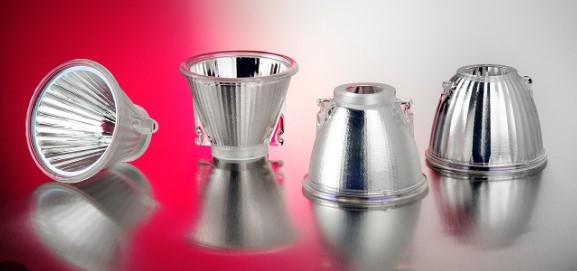In a new case with one of our clients the question of reflector effiency arised. Obviously this efficiency rate relates to the rate of light which is being distrubted by a reflector. In fact there is a rather big range of different efficiencies on the market, ranging from 70% to 80% for aluminum reflectors while silver or advanced dielectric coatings can achieve efficiencies up to 95% to even 99%.
On the mass market reflectors made out are also very widesspread. Naturally their efficiency is much lower with rates down to 50%. Another issue is their poor thermal performance which is another key indicator for the quality of a reflector. However, plastic reflectors are increasingly popular due to their low cost and reduced weight which is of importance within the consumer goods market.
Another important point is also the surface-finishing of the reflector which can be either specular or scattering. Specular reflectors results in mirror-like reflection while scattered reflecors can diffuse the light into different directions. In any case the reflector should have an optimal beam angle control without excessive light spill or glare in order to call it a quality reflector. The UGR (Unified Glare Rating) ranges from UGR <5 to UGR >40 with 5 being the lowest and 40 the highest visual comfort. A range of UGR <16 to <19 is usally acceptable for most locations.
A qualityh reflector should also be durable and resistant to degradation from heat, UV exposure, and other environmental factors to maintain its optical performance over time. Most importantly, it should be designed to work effectively with the specific LED light source, ensuring compatibility and optimal performance. As always with LED lighting fixtures an effective thermal management, hence proper heat dissipation properties of a refletor are important to maintain the performance and longevity of the whole LED lamp.


